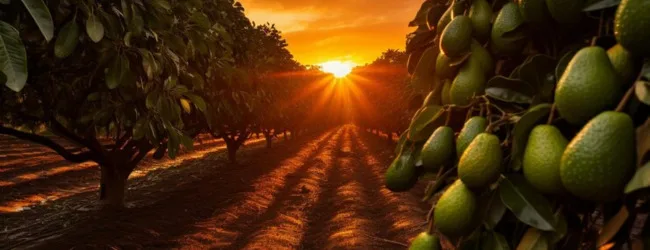Table of contents
- What is Agriculture?
- What is Horticulture?
- Horticulture vs Agriculture: Quick Comparison Table
- Key Statistics
- Where Is Horticulture Practised in India?
- Why Choose Horticulture?
- Earning Sources in Horticulture vs Agriculture
- Government Support & Schemes
- Which is More Profitable?
- What’s the Future?
- Conclusion
- Frequently Asked Questions (FAQs)
Many Indians often confuse horticulture with agriculture, thinking they’re the same. But they are different branches of plant science. While both involve growing plants, they vary in scale, purpose, techniques, and economic value. This article explains the core differences between horticulture and agriculture in the simplest possible way — with examples, statistics, and real-world relevance, especially for the Indian context.
What is Agriculture?

Agriculture is the large-scale cultivation of food crops and rearing of animals for human use.
Key Points:
- It includes crop production (like wheat, rice, and maize) and animal husbandry (like cows, goats, and poultry).
- Mostly practised in rural areas with large land holdings.
- Aims at mass food production.
- Examples in India: Punjab (wheat & rice), Maharashtra (sugarcane), Haryana (cotton).
What is Horticulture?

Horticulture is the science of growing fruits, vegetables, flowers, and ornamental plants.
Key Points:
- Focuses on high-value crops like mango, banana, rose, tulip, aloe vera, etc.
- Needs more skill and care than agriculture.
- Requires smaller land areas, ideal for backyard farming or urban setups.
- Examples in India:
- Maharashtra – grapes
- Karnataka – flowers & spices
- Andhra Pradesh – fruits
- Tamil Nadu – vegetables & medicinal plants
Horticulture vs Agriculture: Quick Comparison Table
| Feature | Agriculture | Horticulture |
|---|---|---|
| Scale of Operation | Large-scale (hectares) | Small to medium-scale (plots or farms) |
| Crop Type | Food grains, pulses, cereals | Fruits, vegetables, flowers, herbs |
| Investment | Medium to high | Low to medium |
| Skill Requirement | General | Specialized knowledge needed |
| Use of Technology | Basic to moderate | Advanced (greenhouses, drip irrigation) |
| Economic Returns | Moderate | High-value, faster returns |
| Government Support | Extensive (subsidies, MSP, loans) | Growing support (MIDH, NHB schemes) |
💡 Pro Tip: If you want to start a Business but have too many doubts, connect with a Business expert from Boss Wallah for guidance – Check Out
Key Statistics
- Agriculture employs about 45% of India’s workforce (Source: Economic Survey 2024-25).
- Horticulture contributes 33% to India’s agricultural GDP while using only 18% of the land area.
- In 2023-24, India produced 355 million tonnes of horticulture crops, higher than food grains (Source: Ministry of Agriculture).
Where Is Horticulture Practised in India?
Major Horticulture Zones:
- Maharashtra – Grapes, oranges, onions
- Karnataka – Flowers, medicinal plants
- Uttar Pradesh – Mangoes, guava
- Himachal Pradesh – Apples, stone fruits
- Tamil Nadu – Spices and herbs
- Kerala – Banana, cardamom, pepper
These states use modern irrigation, polyhouse farming, and post-harvest technologies.
Why Choose Horticulture?
Ideal for small and marginal farmers, women entrepreneurs, and urban gardeners.
Benefits:
- Higher income per acre
- Quick crop cycles – Some crops can be harvested in 60-90 days
- Export potential – Indian mangoes, grapes, and roses are in high demand
- Less water usage – Suitable for water-scarce regions
Earning Sources in Horticulture vs Agriculture
| Income Source | Agriculture | Horticulture |
|---|---|---|
| Primary Sales | Food grains, pulses | Fruits, vegetables, flowers |
| By-products | Straw, husk, manure | Fruit pulp, essential oils, dried herbs |
| Processing Opportunities | Flour mills, oil mills | Juice, jam, pickle, aroma industries |
| Agribusiness Scope | Medium | High, especially with organic branding |
ALSO READ | Why are Manure and Fertilisers Used in Fields?
Government Support & Schemes
Agriculture:
Horticulture:
- Mission for Integrated Development of Horticulture (MIDH)
- National Horticulture Board (NHB) schemes
- Subsidies on polyhouses, irrigation, and nursery development
Which is More Profitable?
Profitability Comparison (Per Acre Estimate):
| Crop Type | Investment (INR) | Yield Time | Net Return (INR) |
|---|---|---|---|
| Wheat (Agriculture) | ₹20,000 | 4-5 months | ₹25,000-₹30,000 |
| Mango (Horticulture) | ₹35,000 | 6-8 months | ₹60,000-₹1,00,000 |
| Marigold (Flower) | ₹15,000 | 3 months | ₹40,000-₹60,000 |
Horticulture crops often generate 2x–3x more income than field crops if managed properly.
ALSO READ | Crop Production and Management: Techniques for Maximising Yields & Profits
What’s the Future?

With growing urban demand for fresh, organic, and exotic produce, horticulture is the future of sustainable and profitable farming in India.
- Agri-startups are investing in vertical farming and hydroponics.
- Online marketplaces like DeHaat and BigHaat offer horticulture kits and training.
- Export opportunities are growing for Indian floriculture and herbal products.
Need Expert Guidance?
Starting a business can be challenging, but you don’t have to do it alone! At Boss Wallah, our 2,000+ business experts are ready to provide valuable insights and guidance. Whether you need help with marketing, finance, sourcing, or any other area of your business, our business experts are here to help you succeed
Confused about Which Business to Start?
Want to start your own business but unsure which one to choose? Explore Boss Wallah, where you’ll find 500+ courses by successful business owners, featuring practical, step-by-step guides on starting and growing various businesses.
Find your perfect business idea today
Conclusion
While agriculture ensures India’s food security, horticulture is the key to economic prosperity and employment generation in the rural and peri-urban areas. Both are important, but if you’re a small farmer or entrepreneur looking for high profit with low land, horticulture may be your best bet.
Frequently Asked Questions (FAQs)
1. What is the main difference between agriculture and horticulture?
Agriculture deals with food crops & animals; horticulture is about fruits, vegetables, and flowers.
2. Which is more profitable in India — agriculture or horticulture?
Horticulture is usually more profitable due to high-value crops.
3. Can I do horticulture in a small space?
Yes, many horticulture crops can be grown in backyards or terraces.
4. Is horticulture good for women entrepreneurs?
Yes, it requires less physical labour and has good market value.
5. What are the main horticulture crops in India?
Mango, banana, guava, papaya, rose, jasmine, and turmeric.
6. Do government schemes support horticulture?
Yes, MIDH and NHB provide funding, training, and subsidies.
7. How long do horticulture crops take to grow?
It depends, but many like marigold or spinach grow within 2-3 months.
8. Which states are best for horticulture in India?
Maharashtra, Karnataka, Tamil Nadu, and Himachal Pradesh.
9. Can I export horticulture products?
Yes, India exports mangoes, grapes, flowers, and herbal products globally.
10. Where can I learn more or get training?
Krishi Vigyan Kendras (KVKs), ICAR institutes, and agri-tech startups offer training.


